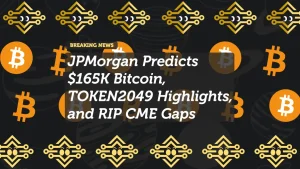
South Korea’s Central Bank to Shape Stablecoin Legislation in 2025
Stablecoins are officially on the radar of one of Asia’s most forward-thinking economies. The Bank of Korea (BoK) has made it clear—it wants a bigger seat at the table as South Korea moves toward tighter crypto regulation in 2025.
In its latest 2024 Payment and Settlement Report, the BoK announced that it plans to actively contribute to the upcoming legal framework focused on stablecoins, calling them both a growing innovation and a potential threat to financial stability.
This comes as South Korea’s Financial Services Commission (FSC) gears up to draft the country’s second major crypto law, which will include specific guidelines around the listing, use, and oversight of stablecoins.
Let’s break down what’s happening—and why this matters for crypto’s future, both in South Korea and globally.
Why Is the Bank of Korea Concerned?
Unlike other digital assets, stablecoins—such as USDT or USDC—are pegged to fiat currencies like the US dollar and are designed to maintain a steady value. While that sounds reassuring on the surface, the Bank of Korea sees some red flags.
Here are the BoK’s key concerns:
- Payment Use Case: If stablecoins are used for everyday transactions, they could interfere with the central bank’s monetary policy tools, such as interest rate control or money supply management.
- Systemic Risk: The BoK argues that despite their name, stablecoins are not immune to volatility or systemic failures—especially if reserves are not fully backed or mismanaged.
- Regulatory Gaps: Without clear legislation, stablecoins could slip through the cracks of traditional financial regulation, introducing security risks, fraud, and financial instability.
In short, the BoK sees stablecoins as more than just a financial trend—they view them as a potential disruption to South Korea’s economic and monetary frameworks.
What’s in the 2025 Crypto Law?
South Korea has been building its crypto regulation in phases. In July 2024, it passed a foundational crypto law focused on exchange licensing, anti-money laundering rules, and investor protections.
Now, in 2025, the country plans to expand that framework with:
- Dedicated stablecoin legislation
- Stricter rules for overseas crypto exchanges
- Clearer token listing guidelines
- Penalties for non-compliance
With the Bank of Korea stepping in, expect the stablecoin portion of the law to reflect macro-level monetary concerns in addition to just market stability.
Why This Is a Big Deal for the Crypto World
South Korea isn’t just another crypto-curious country. It’s one of the most tech-savvy, crypto-active markets in Asia—with strong infrastructure, millions of digital wallet users, and a history of influencing regional trends.
The fact that its central bank wants direct involvement in stablecoin regulation could set a new benchmark for how governments balance innovation with financial oversight.
It also marks a sharp contrast with regions like the European Union, where MiCA (Markets in Crypto Assets) regulation is unfolding more slowly, or the United States, where stablecoin policy remains politically gridlocked—despite growing momentum under the current Trump administration.
How Will This Affect Stablecoin Projects?
If you’re a stablecoin issuer, investor, or developer with eyes on Asia, here’s what to keep in mind:
- Increased Compliance Burden: South Korea will likely require transparency in reserve management, registration, and reporting from all stablecoin projects.
- License Requirements for Foreign Platforms: Exchanges offering stablecoin pairs may need Korean regulatory approval to serve domestic users.
- Impact on Adoption: If the framework is too rigid, it could stifle innovation. But if done right, it may boost trust and encourage wider adoption of regulated stablecoins.
In other words, this is a make-or-break moment for stablecoins operating in Asia’s third-largest economy.
What Happens Next?
Here’s the timeline to watch:
- Mid to Late 2024: Drafting of the second crypto law begins
- Early 2025: Public consultations and central bank input
- Mid to Late 2025: Potential ratification of the law and rollout of enforcement guidelines
Meanwhile, the Bank of Korea is expected to continue publishing research and policy recommendations to influence the legislative direction. The message is clear: they don’t want to be spectators—they want to be architects of South Korea’s crypto future.
The Global Ripple Effect
South Korea’s proactive stance could have ripple effects across Asia and even globally. If the country manages to build a balanced framework that protects the financial system without killing innovation, other countries may follow suit.
This is especially relevant now, with rising stablecoin interest from governments, big banks, and fintechs looking to issue national or private stablecoins.
Final Thoughts
The Bank of Korea stepping into the stablecoin arena is a big moment. It shows that crypto regulation is no longer just about market behavior—it’s about how digital assets fit into a nation’s economic future.
As 2025 approaches, all eyes will be on how this stablecoin regulation unfolds, what compromises are made, and whether South Korea can emerge as a global leader in responsible crypto governance.
If you’re building, investing, or just watching from the sidelines—don’t sleep on South Korea.
















